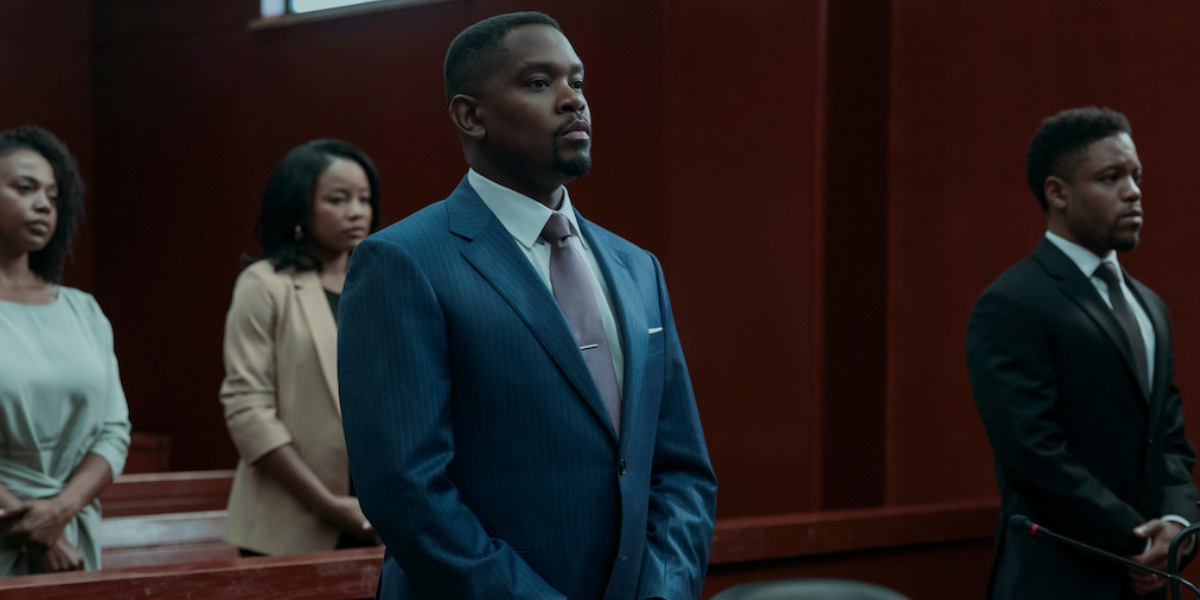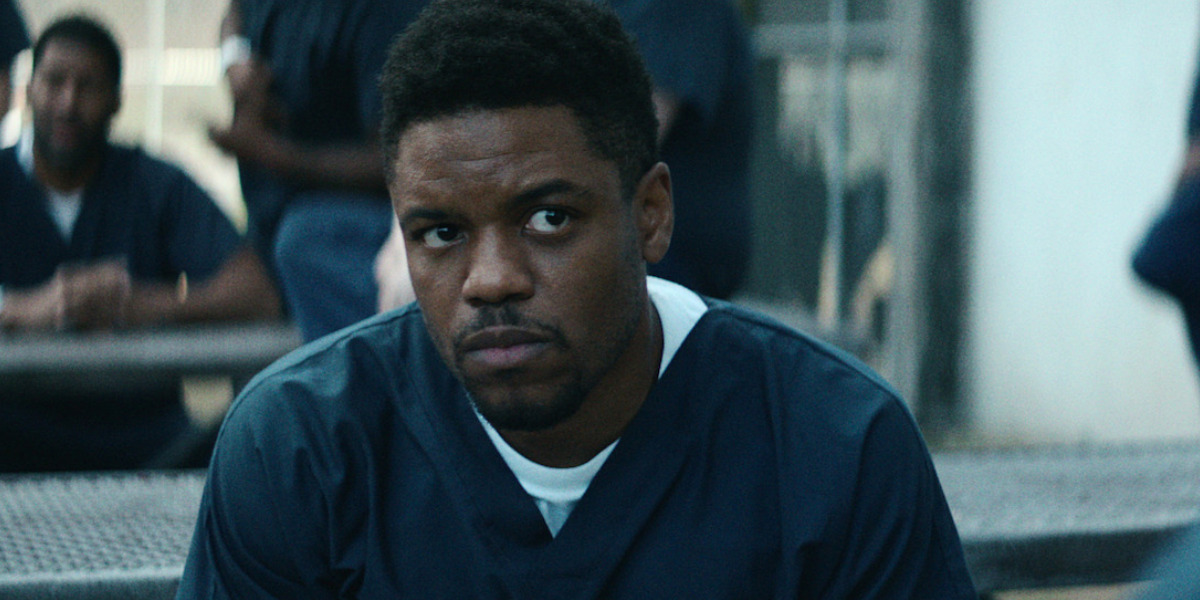Netflix’s ‘A Man in Full’ is a high-stakes, fast-paced drama show that transports the viewers into the world of ruthless business, as the narrative circles around various characters whose narratives revolve around their success and downfalls. The protagonist, Charlie Croker, fights his own legal battle against the opportunistic bankers at PlannersBanc, who are preying on his imminent bankruptcy. Meanwhile, attorney Roger White, known for his corporate excellence, balances the weight of Charlie’s complications with the case of Conrad Hensley, a Croker Global Foods employee who finds himself on the wrong side of the law.
Therefore, a significant portion of the show focuses on Conrad’s narrative as his complicated altercation with a police officer paves the way for an assault charge. Consequently, the same lands him in a court case in front of Judge Lawerence G. Taylor, who further muddles Conrad’s situation. Thus, since these two characters and their storylines remain packed with social relevance, viewers must wonder about their connections to reality. SPOILERS AHEAD!
Conrad Hensley and Lawerence G. Taylor: An Exploration of Race and the Justice System
Conrad Hensley and Lawerence G. Taylor are characters confined to the fictional narrative of ‘A Man in Full,’ which in turn is based on the similarly fictitious eponymous novel by Tom Wolfe. However, while the on-screen adaptation of Wolfe’s work retains authenticity to the source material in most aspects, it tinkers with Conrad’s storyline to adapt it into a socially relevant tale for 2024, compared to its original 1998 themes. While the same still retains Conrad’s— and by association, Lawerence G. Taylor’s fictionality— it also infuses their perspectives with a sense of social realism.

Conrad’s story centers around the fraught sociopolitical relationship between the African-American population and the country’s law enforcement and judicial system. After a misunderstanding related to curbside parking escalates into something graver with the arrival of cops, one officer, Michael Smith, demonstrates physical aggression toward Conrad. As a result, the latter man punches the officer, knocking him out. Consequently, irrespective of the sensitive context around the event, Judge Lawerence G. Taylor assigns Conrad a criminal conviction, lucrative fines, and prison time.
Furthermore, when Conrad and Roger White— who stands as his attorney— attempt to argue a different case, Taylor increases the punishment, showcasing a particular brand of cruelty. Therefore, Conrad and Taylor’s narratives remain deeply steeped in the American judicial system and its pitfalls, particularly around racial bias. In Conrad’s case, even his storyline’s initial premise highlights the real-life issue of police brutality, drawing on actual socio-politics.
According to statistics, over the course of a year, one million citizens face police brutality in one form or another, resulting in 75,000 non-fatal injuries and 600 to 1000 deaths, as per estimations. Within the same statistic, African-American and Hispanic individuals are twice as likely to experience a threatening altercation with a police officer. In particular, African-American individuals face the possibility of death and injuries, requiring medical care twice as much as the Hispanic population.

As such, Conrad’s interaction with Officer Smith, while a fictitious account, remains reminiscent of reality. Likewise, his pre-conviction prison sentence, extending to weeks, also presents an authentic take on the dangerous reality of prison culture. Interestingly, whereas his bookish counterpart gives into a Stoicism philosophy, Conrad’s on-screen persona maintains a desperately hopeful and empathetic drive, demanding justice at every corner. In doing so, the show may diverge from the novel, but the storyline successfully incorporates a narrative that reflects a motivating outlook.
Similarly, while Conrad’s court case, presided over by Judge Taylor, holds no tangible roots in a real-life court case, it draws upon realistic instances to highlight certain real-life issues. Taylor presents an unlikeable but undeniably law-abiding character who holds the written law above all else. For the same reason, he insists upon avoiding or ignoring the social context of Conrad and Officer Smith’s actions, solely zeroing down on Conrad’s assault. Thus, convincing Taylor that Conrad’s actions stemmed from a place of self-defense becomes Roger’s primary challenge.
Consequently, the storyline parallels the real-life nuances of courtroom racism, highlighting the pitfalls of the American judicial system. However, opting for an optimistic outlook, the show concludes Conrad and Taylor’s storylines without a wrongful conviction. As such, the narrative simultaneously reflects the good and bad aspects of reality, allowing for a nuanced thematic depiction of complicated issues. In that regard, despite a lack of basis in real-life counterparts, Conrad and Taylor chart a realistic narrative through their individual contribution to the show’s socio-political themes.
Read More: Best Courtroom Movies on Netflix


You must be logged in to post a comment.